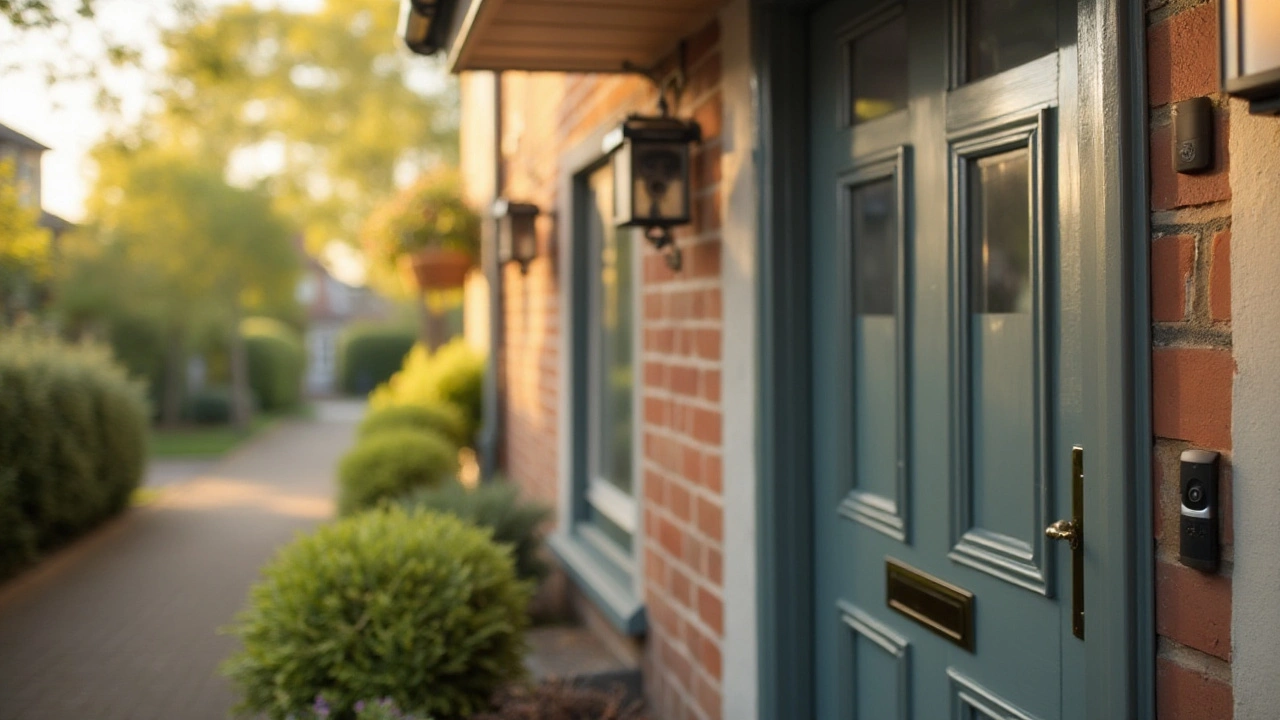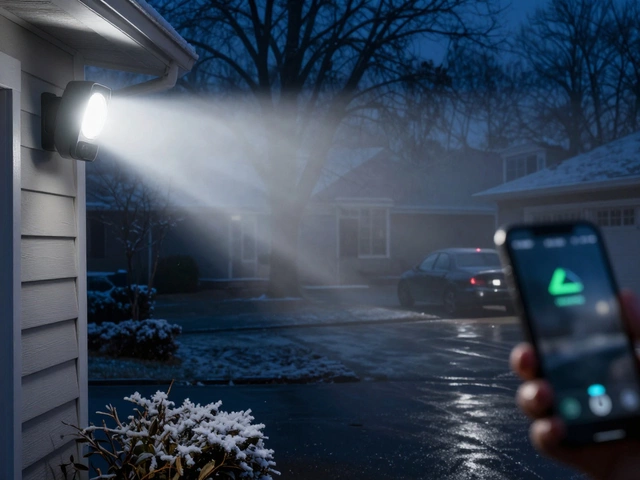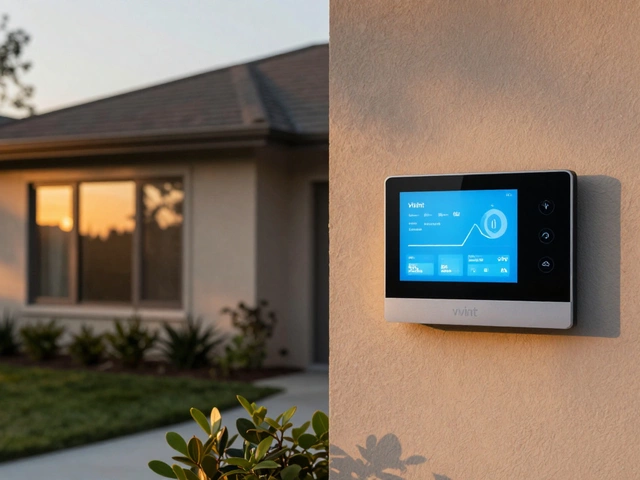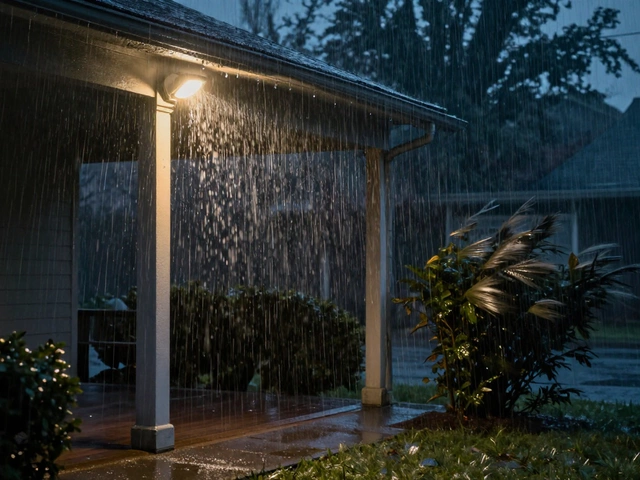Burglaries can happen in any neighborhood, turning the comforting notion of home into a vulnerable target. To enhance our peace of mind and safety, it's crucial to know where most intruders are likely to attempt entry.
The front door, surprisingly, is a frequent choice for burglars. Often this is due to neglect of simple security measures. Windows, especially those left unlocked or without reinforcement, are another preferred entry point.
Apart from the obvious, the garage can serve as an unnoticed gateway. A robust home security system plays a pivotal role in preventing such intrusions, ensuring beloved spaces like our living environments and materials remain secure.
In this article, we will journey through the most common points of entry for burglars and share practical advice to fortify our homes. Let's dive into the details.
- Typical Entry Points for Burglars
- Impact of Easy Accessibility
- Doors: The First Line of Defense
- Windows: A Common Vulnerability
- Garage and Secondary Entrances
- Alarm Systems: An Effective Deterrent
Typical Entry Points for Burglars
When we consider home safety, knowing where burglars are most likely to enter our homes is a crucial part of formulating a strong defense strategy. Surprisingly, statistics reveal that a whopping 34% of burglars walk straight through the front door. It is often a preferred choice due to its accessibility and usually, a lack of robust security measures. Frequently, front doors lack deadbolt locks or are left unlocked entirely by residents who underestimate the necessity of reinforcing their primary entryway. This complacency can be a burglar's golden ticket. Those with burglar alarm systems tend to fare better, as these devices can deter entry attempts.
Windows are another common entry point, with statistics showing that about 23% of burglaries happen through first-floor windows. Windows that are left open or not properly secured become easy targets. Often, burglars apply pressure tactics like removing the screens or breaking the glass, especially if they're amid greenery or shrouded areas that obscure them from the prying eyes of neighbors. Ensuring windows have reliable locks and installing additional physical barriers like security screens can dramatically reduce their appeal to intruders. Additionally, windows alert systems provide an extra layer of protection by notifying the homeowner of suspicious activity.
The back door isn’t far behind with around 22% of burglars choosing this entry. Typically less visible than front doors, back doors may not be as well-lit or robustly built, offering a secluded opportunity for burglars. This can be remedied by installing motion-activated lights and robust locks that deter potential intruders.
"Insurance companies often refer to the 'lazy burglar syndrome,' where the easiest route with the least resistance becomes the most attractive," says Michael Fraser, home security expert.The installation of a comprehensive security system that extends its coverage to the back of the house is also paramount.
While garages may not be the first place people think of, they account for a significant number of break-ins. Often vehicles left unlocked inside provide quick access to valuables and keys. Securing the door between the garage and the main house is vital, as this area can offer intruders the means to enter quietly and undetected. Using automated garage door systems that can lock remotely and alert you when left open can help keep your home safer.
Impact of Easy Accessibility
The reality of home security is stark when considering how easily accessible entry points can invite trouble. Burglars often take the path of least resistance, which is why recognizing and securing these areas is crucial. Statistics show that a significant proportion of burglars gain entry through doors and windows that are left unlocked or inadequately secured. This highlights an irresistible temptation for those seeking to exploit such vulnerabilities.
With front doors being one of the main targets, it's essential to understand their allure. Often, homeowners might underestimate the importance of deadbolt locks or overlook maintaining their door frames. This negligence can offer burglars a simple push or kick-through entry. Additionally, back doors can serve as easy accessibility points since they are less visible from the street, providing cover for stealthy operations.
"A properly installed deadlock is a deterrent; it makes entry difficult without drawing attention," says a security expert from a well-regarded institution.
Windows are also an appealing option due to their frequency of being left open, offering a silent and swift mode of entry. Homes with abundant ground-level windows or large glass panes present a more enticing opportunity if not reinforced. The addition of window locks and bars can make a substantial difference in security and act as an additional layer of protection. It’s important to combine human vigilance with technology, as the combination offers a robust defence against unauthorized entry.
Then there’s the garage. Often forgotten, this entry point can unintentionally become a burglar's best friend. Many garages share a connecting door to the main house that may lack appropriate security measures. Ensuring garage doors are equipped with alarms or reinforced locks can prevent unwanted guests from sneaking in when your back is turned. By prioritizing all potential entry points, you raise the barrier against intrusions.
The issue of easy accessibility urges people to be proactive in enhancing home security. Consider a strategic approach where visible deterrents like cameras or alarm systems act both as a preventive and reactive measure. It’s not just about making it difficult for burglars; it’s about investing in peace of mind and safeguarding your sanctuary. Let us take the necessary steps to understand these entry points and their vulnerabilities to create a safe haven for our loved ones.
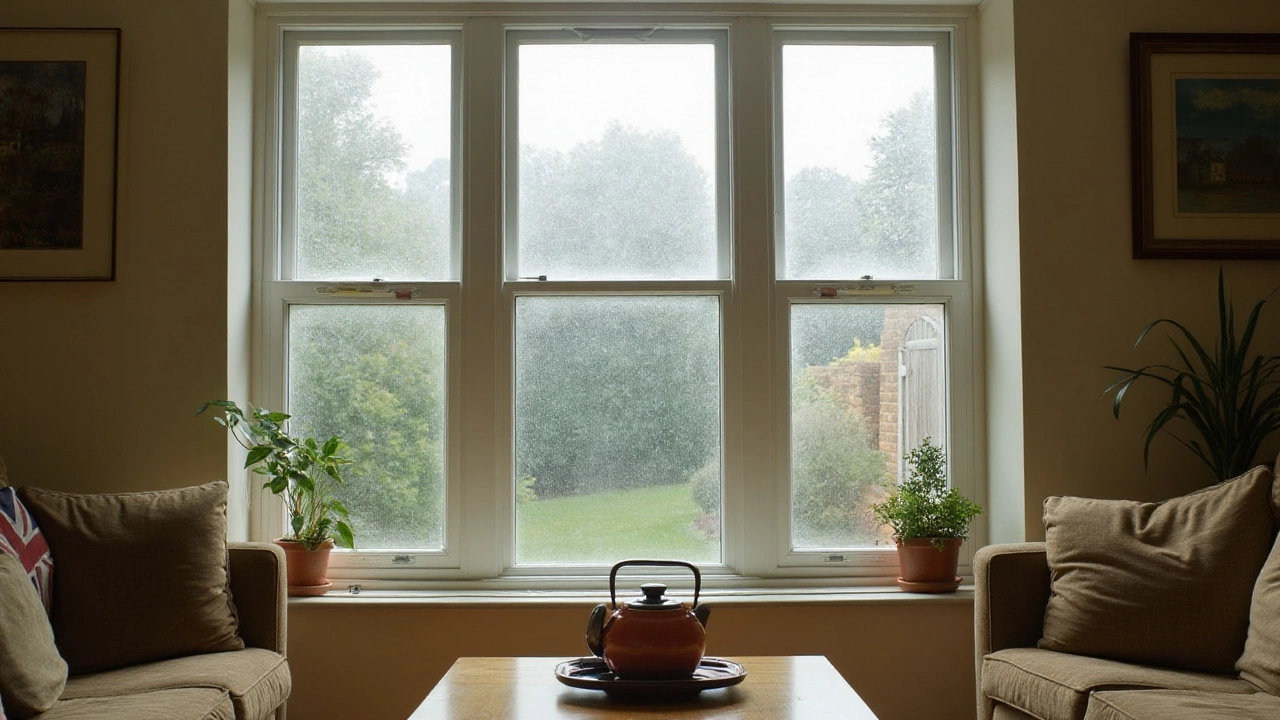
Doors: The First Line of Defense
Your front door stands as the sentinel of your home, a first line of defense against unwanted visitors. It's alarming to note that an estimated 34% of burglars enter through the front door. Most of the time this happens because the door simply isn't secure enough. Beyond the front, side and back doors, especially those that are hidden from view, can also be tempting targets for intruders seeking easy entry.
Home security begins with ensuring these entryways are as fortified as possible. Start by examining the strength and condition of your door. A solid core door, ideally of metal or solid wood, is a must-have deterrent. Hollow doors won’t be able to take much force. Simple reinforcements, such as adding a deadbolt or upgrading to a smart lock, can make a world of difference.
The Power of a Peep Hole and Chain Lock
Often overlooked, basic additions like a peephole can enhance security by allowing you to see who’s outside without opening the door. A peephole with a wide-angle lens grants you a clear field of vision. Don’t underestimate the power of a chain lock as an additional barrier. While it shouldn’t be the only lock, its presence can deter potential break-ins.Security in Numbers: Multi-Lock Systems
Doors equipped with multiple locks provide heightened security. Multiple lock systems make it significantly harder for intruders to swiftly break in. When burglars encounter a door with numerous locks, the increased effort required may serve as a solid deterrent.Alarm Systems: A Sentinel with Sound
Alarm systems aren’t just noise-makers; they’re substantial obstacles in crime prevention. According to a study by the Department of Criminal Justice, homes without security systems are 300% more likely to be broken into. An effective alarm system linked to your doors will immediately alert you to any unauthorized attempts to breach your home's defenses. Moreover, the sight of an alarm system itself can be enough to dissuade most burglars."A well-secured door is your best defense. It's not just about making it bulletproof – it’s about making it dauntingly uninviting to burglars," says Chris E. McGoey, a renowned security consultant.
Lastly, don’t forget that door security isn’t just about hardware. Regularly discuss and practice emergency door protocols with your household. Kids should know never to answer the door to strangers, and everyone should have a plan for quick action if a forced entry attempt occurs. Remember, while no measure is foolproof, effectively locked and monitored doors can severely limit a burglar's chance of gaining entry, safeguarding your home and giving you precious peace of mind.
Windows: A Common Vulnerability
When it comes to home burglaries, windows are often pegged as one of the weakest links in the security chain. It might surprise many to learn that a significant number of break-ins happen simply because the windows are left unlocked or are easily compromised. Thieves look for swift and silent opportunities; an open or poorly secured window offers just that. The standard locking mechanisms that come with many windows can be quickly bypassed, highlighting the need for additional fortification. Leveraging enhanced locks or window bars can make a substantial difference, turning an easy target into a much tougher task.
Modern burglars are quite resourceful, and they often use simple tools like hammers or screwdrivers to pry open ill-fitted windows. Statistics show that about 23% of burglars enter properties through first-floor windows, making it critical to prioritize securing these areas. Adding an extra layer of protection with alarms specifically designed for windows can increase their defense manifold. An audible alarm, triggered by the sound of breaking glass, can immediately ward off intruders. Technology, in this regard, has become an invaluable ally in home protection.
The placement of a window can also dictate its vulnerability level. Often, side or back windows, hidden from street view, are more susceptible. Burglars favor these discrete areas to avoid being noticed. Homeowners should consider investing in window films or laminates, which not only improve the aesthetic but also add toughness, making the glass more shatter-resistant. Investing in motion-sensor lights outside these hidden windows can further deter potential threats by lighting up the area the moment movement is detected.
Old, worn-out windows present another level of risk. These often have weaker frames and outdated locks, unable to stand up to any force. Replacing them with modern, double-glazed windows is a worthwhile investment. Double-glazing not only serves an energy-efficient purpose but also acts as a significant barrier against break-ins due to its layered construction. Triple-lock mechanisms, which have become increasingly popular, offer superior security benefits over single-point locks, drastically reducing the chances of forced entry.
Another practical solution includes installing internal window security bars, which can be tastefully incorporated without compromising on the aesthetic appeal. While these bars can be a little more permanent, they offer peace of mind by physically obstructing entry. Combined with alarm systems, the homeowner can have an integrated security solution that not only detects but also prevents burglaries effectively. Consider the words of National Crime Prevention Council's expert, who states,
"The best defense against a determined burglar is to make your property as unappealing as possible—strong windows are a significant step in the right direction."
As we explore the different measures, it's important to acknowledge the rise of smart home technology that integrates with home security. Nowadays, homeowners can monitor their windows remotely, thanks to smart sensors that send notifications directly to their smartphones. This ability to keep an eye on your property, even when miles away, adds an additional layer of security and reassurance. Combining traditional safety measures with state-of-the-art technology can effortlessly turn a house into a formidable fortress against potential intruders.
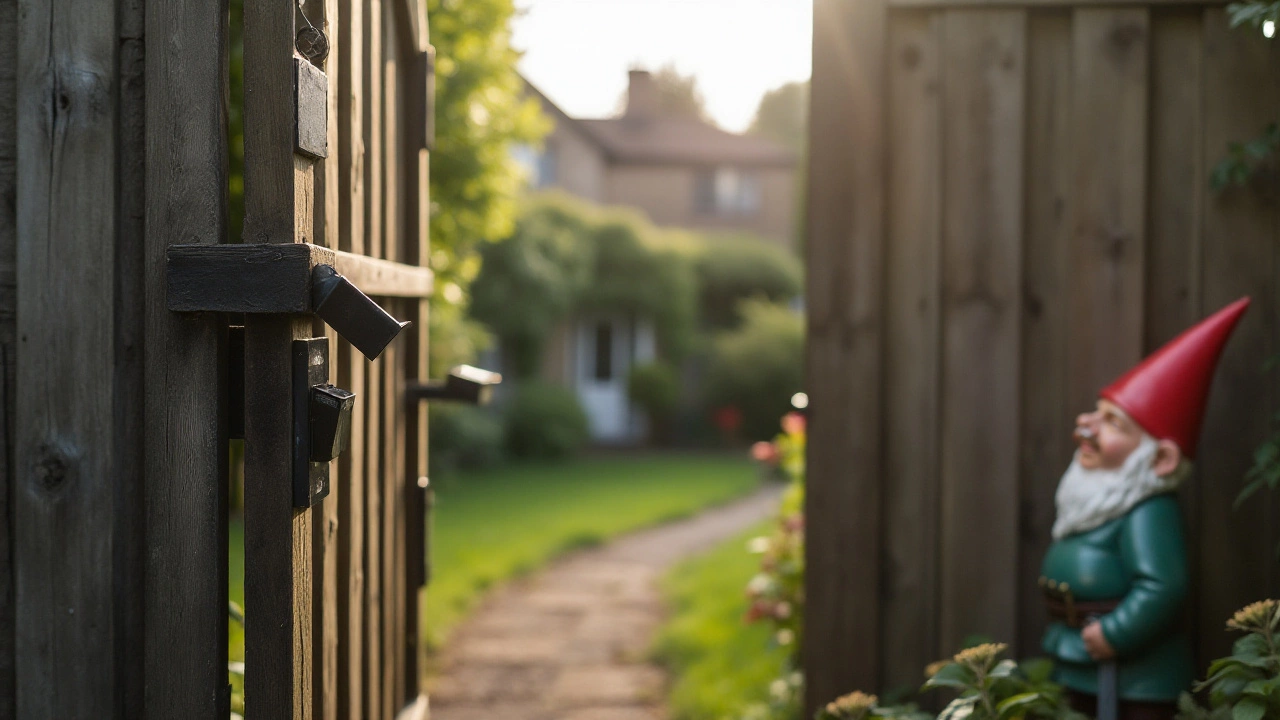
Garage and Secondary Entrances
When it comes to securing your home, paying attention to garage and secondary entrances is crucial. These areas, often overlooked, can be significant weak points. Garages offer a quick and often discreet point of access. They typically hold fewer security features compared to front doors. The absence of deadbolts or reinforced doors can make them an attractive target for burglars. Importantly, the garage might connect directly to the house, offering further access once breached. If automated, older garage doors might be plagued with outdated security technology that burglars are aware of. Often, people leave garage doors open for convenience, forgetting the possible risk it attracts. It's this mindset that often provides burglars with unchallenged entry.
Many secondary entrances, such as side doors, may not be in plain view, offering burglars additional cover. Doors that lead into laundry or mudrooms can be weak links in your home’s security chain. They are sometimes built with less robust materials or inferior locks. It's vital to ensure these entrances are given similar attention as the front entrance in terms of security reinforcements. Using heavy-duty deadbolts and integrated alarm systems can deter intruders. Employing motion-sensor lights near these entryways is another effective strategy. Additionally, reinforced glass or protective films can prevent easy access through breaking panels. Remember, every point of entry is a potential risk when not properly secured.
Protective Measures and Modern Solutions
Securing the garage and secondary entry points isn’t solely about traditional locks and keys. Modern technology has blessed homeowners with innovative options, such as smart locks and advanced security cameras. Smart locks allow you to control access via your smartphone, providing you the ability to lock up from afar. These devices often come with alerts to notify you of attempted breaches. As security technology advances, upgrading these vulnerable entry points becomes increasingly essential. One interesting fact is that about 10% of home burglaries start through the garage, emphasizing its significance. Considering these statistics and tips could preserve both your property and peace of mind.
"Preventive measures through modern technology can go a long way in securing vulnerable home areas," says a Home Security Adviser from Secure Living.
| Entry Point | Percentage of Break-Ins |
|---|---|
| Front Door | 34% |
| First-Floor Windows | 23% |
| Garages | 10% |
Investing in home security systems that include motion detectors and remote monitoring can add layers of deterrence and practicality. While it’s easy to get caught in day-to-day activities, taking the time to think critically about securing your secondary entrances could spare you from unnecessary distress. After all, there’s a saying that goes, "It’s better to be safe than sorry," and when it comes to home security, no truer words were spoken.
Alarm Systems: An Effective Deterrent
Today's world demands that we protect our homes from unwanted intrusions, and a reliable alarm system can serve as the first line of defense. When considering home security, making an investment in a comprehensive alarm system is a strategy that homeowners cannot overlook. These systems are designed with state-of-the-art technology that can detect movements, alert homeowners, and even notify authorities, providing a crucial buffer against burglars.
Modern alarm systems come packed with features such as motion detectors, glass-break sensors, and even smart integration capabilities. The integration of these systems with smart home devices means that, even when you’re away, your home is monitored 24/7 through your smartphone or other devices. It’s also worth mentioning that merely having visible alarm components can deter potential burglars; studies have shown that homes with alarm systems are less attractive to thieves. Let the presence of these systems speak for itself; sometimes, the loudest alarm is the one that doesn't have to sound.
Technical Advances and Customization
As technology advances, so does the sophistication of burglary tactics. Thankfully, home security systems have kept pace, offering adaptive solutions that can cater to specific needs or preferences. Choosing a scalable system that allows for added sensors or cameras as needed is often a smart decision. Today’s security systems offer integration with other smart devices, enabling seamless control through a single application. Whether it’s arming the system, adjusting surveillance cameras, or monitoring a feed from the comfort of your couch, the system can adapt to your lifestyle. These adaptive capabilities offer a peace of mind that older setups could never match.
“Installing a security system marketed as part of a DIY package like SimpliSafe or ADT's Blue by ADT could lower your risk of being burglarized by up to 60%,” states Alexis Martinez, a security consultant at SafeHome.
Alarm Systems Coupled with Monitoring Services
An essential consideration is whether you'd want to pair your alarm system with monitoring services. While self-monitoring offers a sense of control, having professionals keeping an eye on your property around the clock can be invaluable. Companies like ADT and Vivint offer service packages that include live operators ready to alert law enforcement if suspicious activity is detected. While these services incur monthly fees, the peace of mind they provide often justifies the cost. After all, during high-stress situations like break-ins, having trained professionals handle the alarm responses can mitigate risks and reduce panic for the homeowner.
Cost-Benefit Analysis of Installing Alarm Systems
While some homeowners balk at the potential cost of a burglar alarm system, it’s important to consider the economic advantages it brings. Insurance companies often provide home insurance discounts for properties protected by security systems, which can add up to significant savings over time. Moreover, the reduction in homeowners' stress and the increased sense of safety shouldn't be undervalued. The cost of replacing stolen valuables is considerable, but the emotional impact of a break-in can be even more significant. Investing in a robust security system is ultimately a wise choice, balancing peace of mind with practical financial savings.

